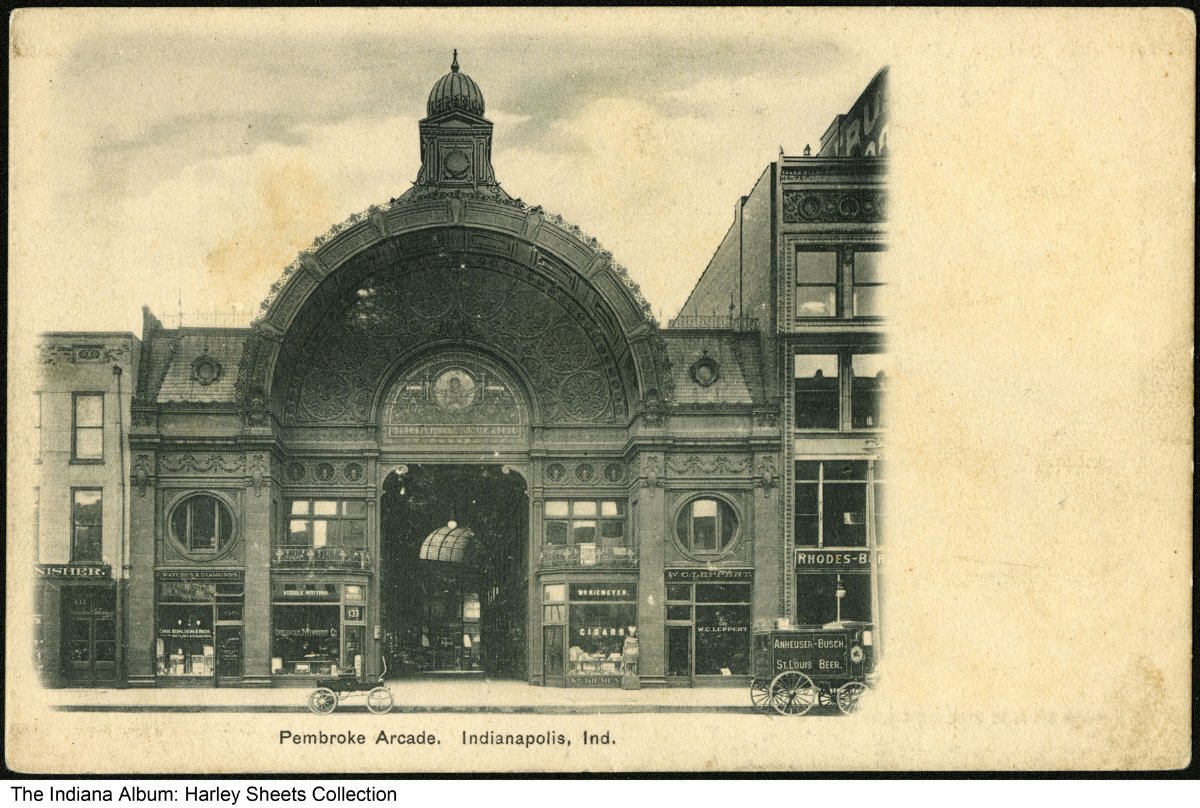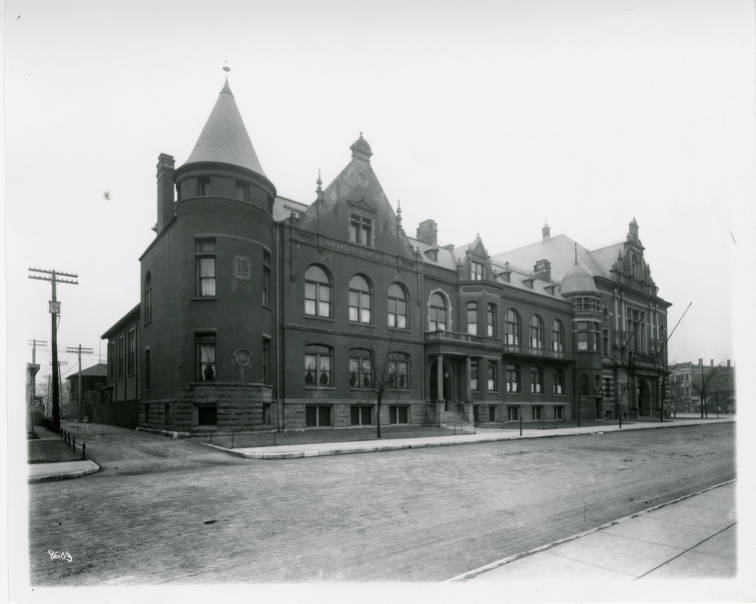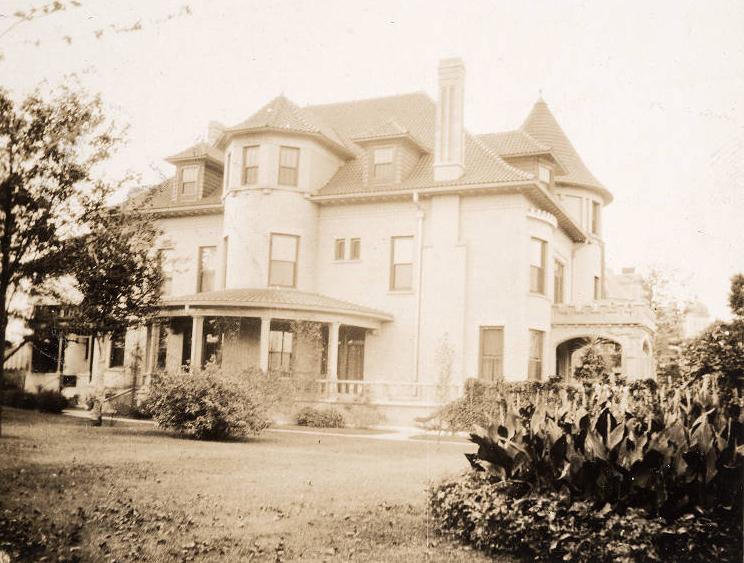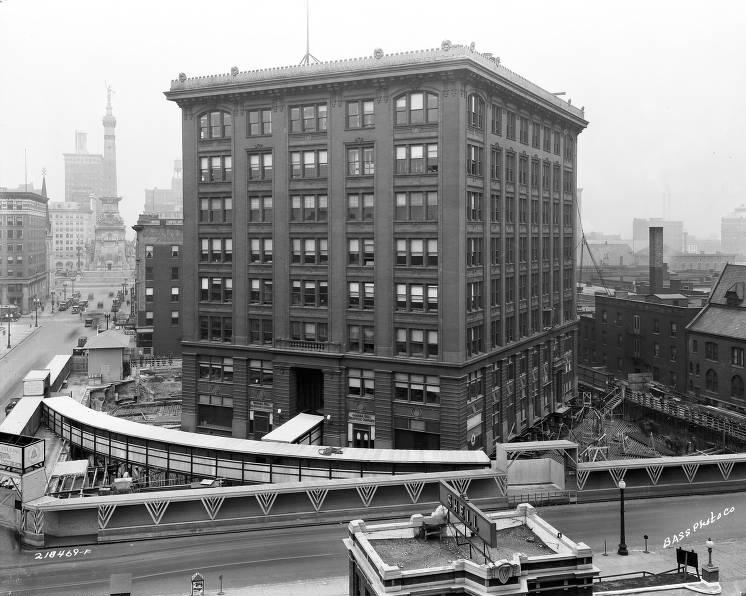In 1888, and Arthur Bohn formed a partnership that lasted until Vonnegut’s death in 1908 and that evolved into an architectural firm that remained active in Indianapolis into the 1990s.

Vonnegut (who was born in Indianapolis) and Bohn (who moved to the city as a child) worked together for the first time in 1884 teaching geometry in an industrial training school backed by the . In 1888, the two men formed an architectural firm, Vonnegut and Bohn.
Their first major commission was the design of Das Deutsche Haus (the ). A celebration of the architects’ German heritage, the building was one of the largest social clubhouses in the United States and included a large auditorium, gymnasium, restaurant, bar, and beer garden. Constructed between 1893 and 1897, the red brick structure featured elaborate limestone ornamentation on its German Renaissance Revival facade. It was placed on the National Register of Historic Places in 1973.

Before Das Deutsche Haus was completed, the firm designed the Pembroke Arcade. Inspired by the architecture of the World’s Columbian Exposition in Chicago in 1893, the arcade was a forerunner of the modern shopping mall. Located at 133-137 East Washington Street, the building had gold-leaf trim, pressed steel radiators, and glasswork by Louis Millet. It was razed in 1943.
Among Vonnegut and Bohn’s buildings still standing in the city is the original at 1701 North Pennsylvania Street (1902), designed in the neoclassical style popularized by the Columbian Exposition. Two years later, they were the architects for the French Romanesque Schnull-Rauch residence at 3050 North Meridian Street, which featured a prominent tower and red tile roof. In 1979, John Rauch Jr. donated the home to the , and in 2009 purchased the property.

In the last years of the 19th century, they designed Indianapolis Public Schools 9,15, 35, and 45. In 1903-1904, Vonnegut and Bohn were architects for the Louis H. Levey home at 2902 North Meridian Street (owned by ), and, in 1905, the firm planned the department store building at 1 West Washington Street. Outside the city, they designed buildings for both Purdue and Indiana universities. Although they employed various building styles, one trademark of their designs was the use of shields as ornamentation in the cornice work.
Bernard Vonnegut died in 1908. By this time his son Kurt, trained at MIT, had joined the firm, which retained the name Vonnegut and Bohn after the loss of its senior member. The partnership between Kurt Vonnegut Sr., and Arthur Bohn produced the Lyric Theatre, which once stood at 125 North Illinois Street (1910-1919); the Severin Hotel at 40 West Jackson Place (1912-1913, later part of the ); the building at 800 North Capitol (1912, 800 Capitol Avenue Apartments); the terra cotta-ornamented at 50 North Illinois Street (1912); and the neoclassical American Fletcher National Bank building at 108 North Pennsylvania (1915).

In the 1920s, the firm gained a partner, Otto N. Mueller, and operated under the name Vonnegut, Bohn and Mueller. It designed Treadwell Hall at (1920) and the Gothic Revival-inspired Roosevelt Building at 9 North Illinois Street (1923, demolished as part of the project).
At the beginning of the Great Depression, the firm designed the Indiana Bell building. The company operated from headquarters in an eight-story red brick structure completed in 1907 at the corner of New York and Meridian streets. In 1930, this building was set on rollers, moved 52 feet south, turned through a 90-degree arc, and moved 100 feet west.
Vonnegut, Bohn and Mueller pulled off this internationally acclaimed engineering feat that made room for the construction of their seven-story limestone structure, which became the company headquarters when it opened in 1932.
Despite this accomplishment, the Great Depression proved to be slow for the firm, as it was for all aspects of the construction and building industry. Vonnegut, Bohn and Mueller, however, did design pre-World War II throughout the state.
In the 1940s, Arthur Bohn retired. Following the dissolution of the architectural partnership of in 1944, the firm’s name changed to Vonnegut and Wright, with Kurt Vonnegut Sr. as president and George C. Wright as secretary-treasurer.
By 1955, Alfred John Porteus had joined the firm and the name changed again to Vonnegut, Wright and Porteous. In 1959, Vonnegut retired, and C. Charles Lowe joined the firm. When Wright retired in 1961, the firm became known as , with Wright’s son William Caleb, Lowe, and Porteous as the principals.
In 1989, Wright Porteus and Lowe merged with Bonar Associates, a Fort Wayne-based consulting and engineering firm. GAI Consultants, a national consulting and engineering firm headquartered in Pittsburgh, acquired Bonar in 2010, and it became the Midwest division of that company.
GAI has become a global firm that serves the aviation, transportation, manufacturing, and health care industries. It also consults in community development, municipal government, and energy projects.

Help improve this entry
Contribute information, offer corrections, suggest images.
You can also recommend new entries related to this topic.

